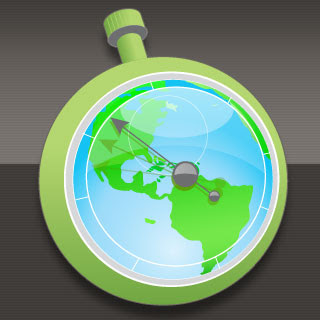The search to define happiness has consumed a lot of human energy.
Angus Deaton, Ph.D., a renowned economist, and Daniel Kahneman, Ph.D., a Nobel prize-winning psychologist, both from Princeton University....looked for happiness in numbers. ...they analyzed responses to the Gallup-Healthways Well-Being Index (GHWBI), a daily survey that asks roughly 1,000 U.S. residents a battery of questions about their wellbeing.
After analyzing more than 450,000 GHWBI responses from 2008 and 2009, Dr. Deaton and Dr. Kahneman found that happiness is actually the result of the fulfillment of two abstract psychological states --
1.) emotional wellbeing and
2.) life evaluation.
The finding is important because it offered the researchers a new and more useful way of looking at happiness.
The difference between life evaluation and emotional wellbeing is vital, though the two are related.
Dr. Kahneman says, "They're clearly distinct dimensions that are correlated. But they have somewhat different determinants. What improves people's emotional wellbeing is different from what it takes to make them say that they're satisfied with their life."
In other words, life evaluation and emotional wellbeing refer to different feelings.
Life evaluation requires a long view of a person's overall life. Though life evaluation is colored by the day's emotions, Dr. Kahneman and Dr. Deaton's GHWBI research shows that people evaluate their lives based on a retrospective of their achievements. If they've accomplished the goals they've set, are financially secure, and are emotionally fulfilled, they're more likely to have a high evaluation of their life.
Emotional wellbeing reflects a much shorter view and refers to the emotional quality of an individual's everyday experience. If the day's experience is negative, emotional wellbeing will take a hit. That said, people with good emotional wellbeing seem to get it through social contact.
"Emotional happiness is primarily social," says Dr. Kahneman. "The very best thing that can happen to people is to spend time with other people they like. That is when they are happiest, and so, without question, this is a major story.
We find loneliness is a terrible thing. So is extreme poverty. But loneliness, regardless of how rich you are, is a very bad thing."
But the research also indicates that you won't become happy merely by socializing with your best friends and achieving your goals. You also need $75,000.
The most reported finding is that people with an annual household income of $75,000 are about as happy as anyone gets. More specifically, those with annual household incomes below $75,000 give lower responses to both life evaluation and emotional wellbeing questions. But people with an annual household income of more than $75,000 don't have commensurately higher levels of emotional wellbeing, even though their life evaluation rating continues to increase.
Your emotional life depends primarily on your relationships with people.
Emotional wellbeing may not improve with additional money, Dr. Deaton and Dr. Kahneman think, because of several factors. One is that humans adapt quickly to the things money can buy. A mansion is a thrill the first month you live in it, but it's just a house the second.
Moreover, other research suggests that wealthy people don't take as much pleasure in actual pleasure as do poor people. In one test, social researchers primed some test subjects to feel rich and found that the "wealthy" subjects didn't enjoy luxury chocolate as much as the control group, the "non-wealthy," did.
And Dr. Kahneman and Dr. Deaton believe that when it comes to the very wealthy with high life satisfaction, their evaluations may be influenced more by keeping score than by purchasing power. If life evaluation is based on reviewing how much progress people have made in their lives, money may become a marker of success.
So people who have achieved their goals, who spend a lot of time with friends, and who make a lot of money have the most life satisfaction, while those who earn at least $75,000 a year have the greatest emotional wellbeing. But that doesn't meant they aren't stressed.
The GHWBI data show that college graduates report more stress than people without college degrees, and that stress levels are generally higher in wealthy countries.
Comparing the U.S. life evaluation scores with data available from about 150 other countries through the Gallup World Poll, the U.S. ranks fairly high. The only nations with higher scores are the Scandinavian countries, Canada, the Netherlands, Switzerland, and New Zealand.
However, while Americans come in near the top for life evaluation and do well on wellbeing, they're also among the most stressed. U.S. stress levels are the fifth highest when compared to data from other countries in the Gallup World Poll.
There is one thing, however, left to mention in this discussion of happiness -- individual temperament. Dr. Kahneman and Dr. Deaton's research, and that of others, clearly indicates that some people are just born happier, or "sunnier," as Dr. Deaton calls them. Their emotional wellbeing will always be higher than everyone else's.
That's not to suggest that those who aren't "sunny" are doomed to lives of misery. Even the most pessimistic, grumpy-by-nature people can find solace in Dr. Deaton's statement: "It may be that we're not designed for happiness." And what is it we were designed for? "To avoid getting eaten by predators," says Dr. Deaton. "If nothing eats you today, you ought to be happy. At least it's a start."
Source:
This post originally appeared on
Gallup Management Journal.


